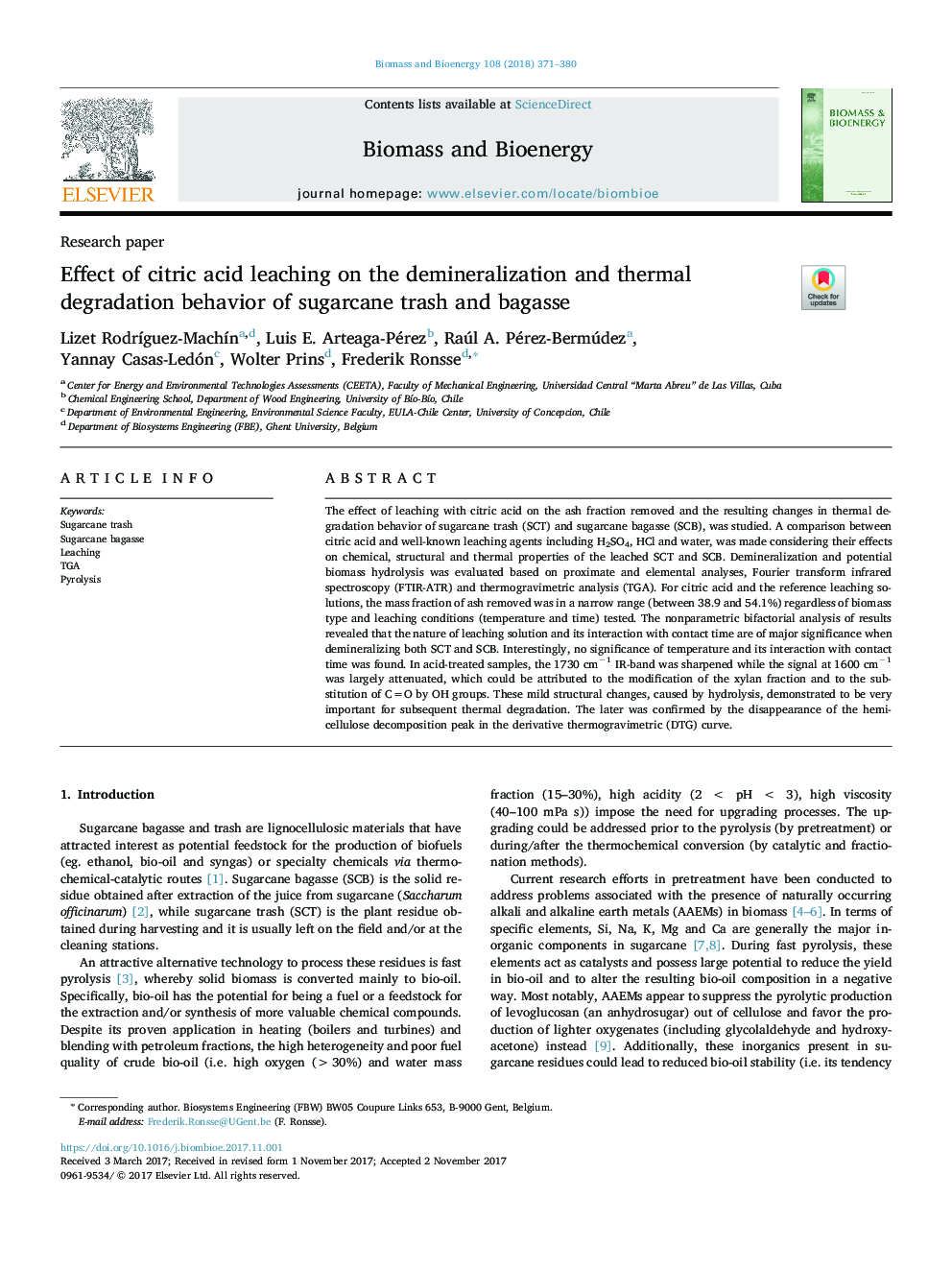| Article ID | Journal | Published Year | Pages | File Type |
|---|---|---|---|---|
| 7063074 | Biomass and Bioenergy | 2018 | 10 Pages |
Abstract
The effect of leaching with citric acid on the ash fraction removed and the resulting changes in thermal degradation behavior of sugarcane trash (SCT) and sugarcane bagasse (SCB), was studied. A comparison between citric acid and well-known leaching agents including H2SO4, HCl and water, was made considering their effects on chemical, structural and thermal properties of the leached SCT and SCB. Demineralization and potential biomass hydrolysis was evaluated based on proximate and elemental analyses, Fourier transform infrared spectroscopy (FTIR-ATR) and thermogravimetric analysis (TGA). For citric acid and the reference leaching solutions, the mass fraction of ash removed was in a narrow range (between 38.9 and 54.1%) regardless of biomass type and leaching conditions (temperature and time) tested. The nonparametric bifactorial analysis of results revealed that the nature of leaching solution and its interaction with contact time are of major significance when demineralizing both SCT and SCB. Interestingly, no significance of temperature and its interaction with contact time was found. In acid-treated samples, the 1730Â cmâ1 IR-band was sharpened while the signal at 1600Â cmâ1 was largely attenuated, which could be attributed to the modification of the xylan fraction and to the substitution of C=O by OH groups. These mild structural changes, caused by hydrolysis, demonstrated to be very important for subsequent thermal degradation. The later was confirmed by the disappearance of the hemicellulose decomposition peak in the derivative thermogravimetric (DTG) curve.
Related Topics
Physical Sciences and Engineering
Chemical Engineering
Process Chemistry and Technology
Authors
Lizet RodrÃguez-MachÃn, Luis E. Arteaga-Pérez, Raúl A. Pérez-Bermúdez, Yannay Casas-Ledón, Wolter Prins, Frederik Ronsse,
